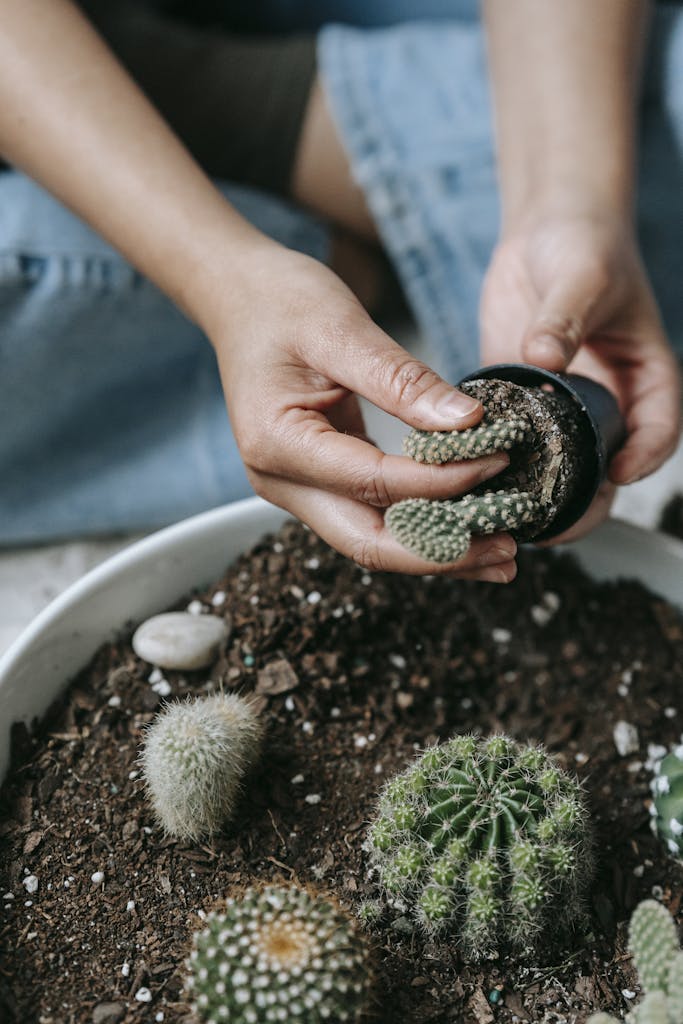Transplanting Cedar Tree: Uncover the Best Time to transplant in 2024
Acquiring proficiency in gardening and understanding the intricate details of transplanting can potentially impact the growth and vitality of your tall cedar trees. The activity of transplanting big emerald cedars is notably challenging. However, adhering to these straightforward and uncomplicated cedar tree transplanting tips could make the process smoother, thereby reducing unnecessary strain on your tree.
Cedar trees thrive in well-drained soil and require careful handling during transplant, especially considering their expansive root system. It’s often best for the tree if you hire professional help. The best time for this delicate operation is early spring or late fall, during the tree’s dormancy phase.
Key Takeaways
- Cedar trees prefer well-drained soil enriched with organic matter.
- Early spring or late fall, when the trees are dormant, is ideal for transplanting.
- Before you move a cedar tree, water it thoroughly to help the soil adhere to the roots and wrap the root ball for better stability.
- After transplanting, provide the cedar tree with sufficient water and mulch around the base, taking care to cover the root ball of the tree, and monitor for stress or disease.
Understanding Cedar Trees: A Primer Before Transplanting

Cedar trees are known for their grand stature and aromatic wood. Their survival during transplanting heavily depends on the integrity of their root balls.
The soil quality is also paramount—it should be rich in organic matter to provide moisture retention and essential nutrients post-transplant. Protecting much of the root ball’s structure is critical, which involves digging a wide trench several months before the transplant and minimizing soil disruption.
Strategize: Determining the Best Time to Transplant Cedar Trees

Recognizing the optimal time to plant a cedar tree and knowing when to appropriately dig a hole twice as wide as the root system is essential to minimize stress and increase survival chances. Dormancy periods, such as early spring or late fall, are when cedars are best transplanted.
Early spring is particularly favorable to allow the tree a full season to recover and establish roots. Preparing the new site and handling the root ball in burlap with care is also vital for a successful large tree transplant.
Preparing for Cedar Tree Translocation: Crucial Preceding Steps

Preparation is key. Watering the tree a few days before trying to plant the cedar ensures that the soil sticks together. The new site should have a hole twice the width and the same depth as the root ball, allowing space for root expansion.
Early spring timing is recommended for the least stress and best establishment.
How to Transplant Cedars: Step-by-Step Guide

Select a mild early spring day for the move which will allow the tree to settle well, ensuring much of the root ball remains intact. Prepare the new site first, dig around the cedar carefully, lift the tree with care, and plant it in the new location.
Backfill with moist soil and compost, then water thoroughly. Don’t forget, that early spring is generally the best to transplant cedars, including large ones.
Post-Transplant Maintenance: Ensuring the Survival of Your Transplanted Cedar

Post-transplant care is essential. Immediate watering settles the moist soil around the tree post-transplant. After transplanting your cedar tree, apply mulch to retain moisture fill any air pockets around the root ball, and avoid stressing the tree with hasty fertilization or pruning.
When transplanting cedar trees with ease, it’s crucial to watch for distress signs in the trunk of the cedar and address any issues promptly. Like other tree species, emerald cedars are hardy, but they require consistent care to adapt to their new environment.
– What are the best companion plants for an Emerald Cedar Tree?
When considering companion plants for an Emerald Cedar Tree, it’s important to choose species that complement its growth habits and nutrient needs. Some great choices to consider include lavender, marigolds, and Russian sage. For more ideas, consult a cilantro companion planting guide to ensure a harmonious garden.
Conclusion
Timing is key to transplanting large emerald cedars successfully. Early spring, when the ground is workable, is optimal for digging a hole and preserving the root ball’s depth.
To ensure the health and growth of these green giants in their new habitats, preparation, careful transplanting, with the root ball wrapped in burlap, and consistent aftercare are needed when trying to transplant a large cedar.
Frequently Asked Questions
When is the best time to transplant a cedar tree?
Generally, the best time to transplant a cedar tree or cedar hedge is in late winter or early fall. These periods offer the best conditions for the cedar tree’s growth and recovery from transplant shock.
What is transplant shock and how does it affect a cedar tree transplant?
Transplant shock in the cedar hedge is a state of slowed growth and reduced vitality that a tree may experience after being moved or when the root ball is not well-secured. Disturbance during the process is common in large trees, particularly cedar tree transplants, especially if the tree size is significant.
Symptoms of distress in a transplanted large cedar tree may include wilting, scorching of leaves, and minimal new growth. To alleviate transplant shock and reduce stress on the tree, ensure proper care of the large cedar tree following the transplant.
Is transplanting cedar trees that are mature possible?
Yes, a mature tree can be transplanted, but it requires more effort and caution. Mature cedar trees have larger and deeper root systems, so it is imperative to ensure the root system is minimally disturbed during the process of successful transplanting.
Are true cedars and the eastern red cedar the same, and can both be transplanted?
No, true cedars belong to the genus Cedrus and include trees like the Atlas cedar. The eastern red cedar is actually a type of juniper. Similar methods such as digging a hole deep as the root ball, wrapping the root ball in burlap and filling air pockets around the roots can be used to transplant both cedar trees and cedar hedges.
Does a cedar tree grow fast after the transplant?
A cedar tree can grow relatively fast after being transplanted, but this largely depends on the tree’s care after the transplant. Providing enough water and nutrients, and placing the tree in a suitable environment, will promote faster growth.







